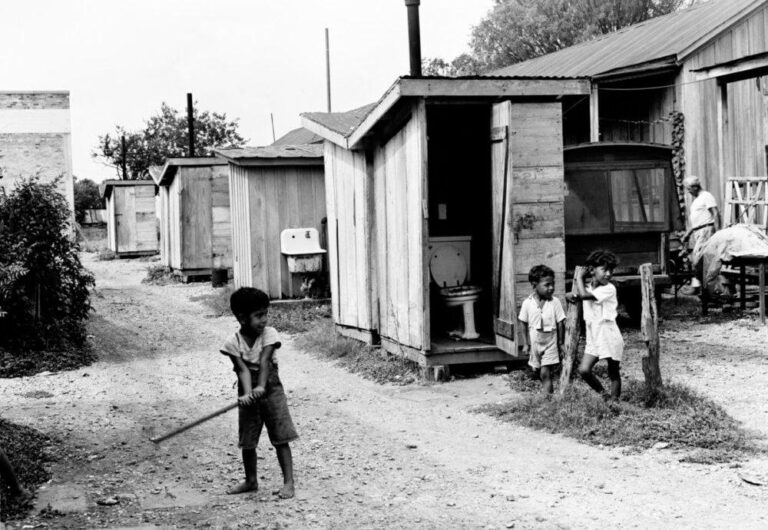San Antonio’s Trailblazing Role in School Desegregation: A 70-Year Retrospective
Breaking Barriers: San Antonio’s Early Commitment to Educational Integration
Seven decades ago, San Antonio’s public school system boldly stepped into uncharted territory by initiating desegregation well before the Supreme Court’s landmark Brown v. Board of Education ruling in 1954. This pioneering action not only challenged entrenched racial divides but also set a transformative example for school districts nationwide. At a time when segregation was deeply embedded in American society, San Antonio’s early integration efforts signaled a progressive shift toward educational fairness and inclusivity, offering students from diverse racial and ethnic backgrounds the chance to learn together in shared classrooms.
Several critical elements fueled this groundbreaking initiative:
- Persistent advocacy from civil rights activists and concerned parents
- Strategic legal challenges that questioned the constitutionality of segregation
- Visionary leadership among school officials committed to reform
- Cooperation between municipal authorities and educational boards
| Year | Key Event | Significance |
|---|---|---|
| 1953 | Desegregation policy formally adopted | Established legal groundwork for integration |
| 1954 | Opening of the first integrated classroom | Marked a symbolic victory for educational equality |
| 1955 | Expansion to district-wide desegregation | Facilitated broader acceptance and gradual progress |
Overcoming Obstacles: Community Dynamics and Early Integration Challenges
The path toward desegregation in San Antonio was fraught with both determination and opposition, mirroring the national climate of racial tension. Students and families encountered a complex landscape where integration was met with mixed emotions. Many minority students continued to face disparities in school resources, including outdated facilities and fewer extracurricular options compared to their white peers. Reports of social exclusion and harassment underscored the emotional challenges of this historic transition.
Despite these hurdles, the community mobilized in diverse ways to support the integration process. Local leaders, educators, and advocacy groups spearheaded initiatives to promote understanding and cooperation. Religious organizations and civic groups facilitated open dialogues and created support networks, while schools introduced programs celebrating cultural diversity to foster inclusivity. Key community-driven efforts included:
- Parent-Teacher Associations: Served as bridges to address concerns and encourage unity
- Student Organizations: Promoted intercultural friendships and peer support
- Local Press: Highlighted both successes and challenges, influencing public opinion
| Program | Effect | Duration |
|---|---|---|
| Intercultural Workshops | Enhanced mutual respect and understanding | 2 years |
| Expanded Counseling Services | Provided vital mental health support for students | Continuing |
| Community Dialogue Forums | Strengthened communication among stakeholders | Monthly for 3 years |
Transformative Outcomes: How Desegregation Advanced Educational Equity
San Antonio’s early desegregation efforts catalyzed significant improvements in educational equity throughout the district. Previously segregated schools evolved into more diverse learning environments, granting historically marginalized students greater access to quality resources and opportunities. This shift led to a more equitable distribution of funding, enriched extracurricular activities, and upgraded facilities that had been predominantly available to white students. The integration also introduced multicultural curricula, fostering a more inclusive educational experience.
Subsequent studies reveal measurable progress in student achievement, particularly among Black and Hispanic learners. Key indicators such as graduation rates, standardized test performance, and college enrollment saw marked increases within a decade of integration. Contributing factors to these positive trends included:
- Broader availability of experienced and certified teachers across all schools
- Introduction of bilingual education programs supporting English language learners
- Heightened involvement of families and community members in school governance
| Metric | Before Desegregation | Ten Years After |
|---|---|---|
| High School Graduation Rate | 45% | 68% |
| Average Reading Test Scores | 62% | 75% |
| College Enrollment Rate | 30% | 54% |
Insights from San Antonio’s Desegregation for Contemporary Educational Reform
The pioneering desegregation of San Antonio’s schools offers enduring lessons for today’s efforts to create equitable and inclusive education systems. The city’s success was rooted in a collaborative approach that united policymakers, educators, families, and community advocates. By emphasizing student integration and equitable resource allocation, San Antonio challenged systemic segregation decades ahead of many other districts. This history highlights the necessity of courageous leadership combined with grassroots involvement to dismantle persistent educational inequalities.
Key strategies from San Antonio’s experience that remain relevant include:
- Gradual Implementation: Phasing reforms to build consensus and reduce opposition
- Community Engagement: Ensuring reforms reflect the voices and needs of affected populations
- Continuous Evaluation: Monitoring progress and adapting strategies to improve outcomes
| San Antonio’s Approach | Application in Modern Reform |
|---|---|
| Active Community Participation | Parent-led equity initiatives |
| Legal Advocacy and Policy Change | Legislative reforms and policy advocacy |
| Stepwise Integration | Incremental curriculum and policy adjustments |
Looking Ahead: Continuing the Legacy of Educational Equity
As San Antonio commemorates the 70th anniversary of its groundbreaking desegregation, the city’s role as a civil rights forerunner remains a powerful reminder of what determined communities can achieve. Although challenges in achieving full educational equity persist nationwide, San Antonio’s early actions provide a blueprint for progress. Reflecting on this historic milestone renews the commitment to fostering inclusive learning environments where every student has the opportunity to succeed, ensuring that the promise of equal education endures for future generations.




